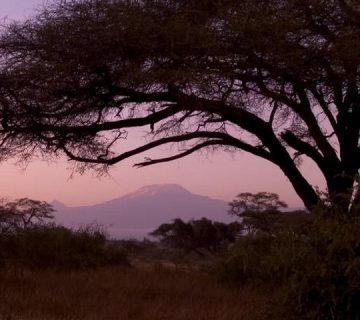Kilimanjaro Trekking With Family: Health and Safety Tips
Scaling the majestic Mount Kilimanjaro with your family can be one of the most rewarding and transformative experiences you can share together. Trekking this iconic peak not only offers breathtaking views and thrilling adventures but also an opportunity to strengthen bonds and create lasting memories. At the Kilimanjaro Centre for Trekking and Ecotourism (KCTE), we understand the significance of this journey and are dedicated to ensuring that your family’s trek is safe, enjoyable, and unforgettable. In this blog post, we will guide you through essential health and safety tips to make your Kilimanjaro trek with family not just possible but also a phenomenal success.
Preparing for Your Adventure
Health Checks and Fitness Preparation
Before embarking on your trek, it’s crucial to ensure that all family members are in good health and adequately prepared for the physical demands of climbing Kilimanjaro. A visit to a healthcare provider for a medical check-up is essential, especially to assess high-altitude tolerance and overall physical condition. Start a fitness regimen months in advance that includes cardiovascular and strength training, possibly integrating activities such as hiking, jogging, or swimming to boost endurance.
Age Considerations and Acclimatization
Kilimanjaro is accessible to children, but we recommend that they be at least 10 years old, as younger children might struggle with the altitude and the physical demands of the trek. Acclimatization is key to a successful climb, so choose a route that allows for gradual ascent and provides time to adjust to the altitude. The Lemosho and Machame routes are excellent choices for families, offering scenic beauty and better acclimation options.
On the Mountain: Health and Safety Practices
Hydration and Nutrition
Maintaining hydration is vital during your climb. The dry mountain air and physical exertion can lead to dehydration much quicker than expected. Each family member should consume at least three to four liters of water daily. Balanced meals rich in carbohydrates and proteins are also crucial to maintain energy levels and support physical exertion.
Dressing Appropriately
The weather on Kilimanjaro can be highly variable, ranging from warm tropical temperatures at the base to below freezing at the summit. Dressing in layers is advisable, allowing you to adjust to the changing conditions easily. Essential clothing includes moisture-wicking base layers, a warm fleece, a waterproof outer layer, and thermal hats and gloves. Don’t forget to break in your hiking boots well before the trek to avoid blisters.
Listen to Your Body
Altitude sickness is a real concern when trekking Kilimanjaro and can affect anyone, regardless of age or fitness level. Watch for symptoms such as headache, nausea, dizziness, and fatigue. If any family member experiences these symptoms, it’s important to communicate with your guide immediately. KCTE’s experienced guides are trained to deal with such situations and will make necessary adjustments to your trekking plan, including descending if required.
Ensuring Safety with KCTE
Experienced Guides and Support Staff
At KCTE, we pride ourselves on our team of certified and experienced guides who are not only adept at navigating the mountain but are also trained in first aid and emergency response. Our guides are passionate about making your family’s Kilimanjaro experience as safe and enjoyable as possible. They will lead you every step of the way, offering insights into the mountain’s flora, fauna, and geography.
Equipment and First Aid
We equip our treks with all necessary safety gear, including first aid kits and emergency oxygen. Our guides conduct regular health checks to monitor the well-being of all climbers, especially when ascending beyond 2,500 meters, where altitude sickness becomes more prevalent.
Making Memories to Last a Lifetime
Trekking Kilimanjaro is not just about reaching the summit; it’s about the journey. Encourage your children to keep a travel journal or a photo diary to document their experiences. These memories will be invaluable, and the sense of achievement shared as a family will be something to cherish forever.
Ready to Embark on Your Family Adventure?
Trekking Kilimanjaro with your family is an incredible way to bond and achieve something extraordinary together. With the right preparation and by following these health and safety tips, you’ll be well on your way to a successful and memorable climb. Why not book your adventure with the Kilimanjaro Centre for Trekking and Ecotourism (KCTE) today? Let us help you take the first steps towards the summit with confidence and joy.
Still have questions? Check out our FAQ section below, or visit our website for more information.
FAQ: Kilimanjaro Trekking With Family
Q1: What is the best time of year to climb Kilimanjaro with family?
A1: The best times to climb Kilimanjaro are during the dry seasons, from June to October and from December to March. These periods offer the most favorable weather conditions for trekking.
Q2: How long does it take to climb Kilimanjaro?
A2: It typically takes about 5 to 8 days to climb Kilimanjaro, depending on the route chosen. Routes that allow more time for acclimatization are preferable for families.
Q3: Are there special considerations for children trekking Kilimanjaro?
A3: Yes, ensure children are physically capable and mentally prepared. Engage them in the planning process, and make sure they understand what to expect. Also, consider routes that are less strenuous and allow more time for acclimatization.
Q4: How can I minimize the impact of altitude sickness?
A4: Acclimatize properly by selecting a longer route, ascend slowly, stay hydrated, eat well, and rest adequately. Listen to your body and communicate openly with your guide about how you are feeling.
Ready to create unforgettable memories with your family on Mount Kilimanjaro? Contact Kilimanjaro Centre for Trekking and Ecotourism (KCTE) today, and let’s start planning your safe and exciting adventure on Africa’s highest peak!




